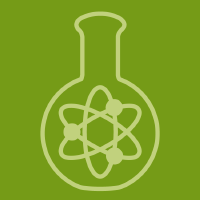Topic Menu
► Topic MenuTopic Editors


Materials for Corrosion Protection
Topic Information
Dear Colleagues,
Corrosion has been and remains a challenge in industrial processes. The cost of corrosion, linked to prevention and repair of damage, is estimated at around 3.4% of the global GDP, but around 15% to 35% of this cost could be spared via mitigation methods.
The main avenue for improving corrosion resistance is the protection of materials, either through the selection of intrinsically corrosion-resistant materials or the modification of their surface properties with various treatments and coatings.
We are inviting submissions to a topic related to materials for corrosion protection, to present cutting-edge materials and surface treatments aiming at reducing corrosion in various environments and applications.
Topics of interest for publication are:
- Corrosion-resistant metals and alloys
- Metal substitutes for highly corrosive environments
- Conversion coatings and anodization
- Barrier coatings (metallic or non-metallic)
- Sacrificial coatings
- Self-healing coatings
- Sol–gel coatings, polymer coatings, and paints
- Corrosion-inhibitor-containing coatings
- Complex coating systems
- Atmospheric-corrosion-resistant materials
- High-temperature oxidation-resistant materials
Dr. Nicolas Mary
Dr. Véronique Vitry
Topic Editors
Keywords
- corrosion
- coatings
- stainless steels
- passivation
- paint
- polymer coatings
- surface protection
- rust resistance steels
- corrosion-resistant alloys
- conversion treatments
- electrochemical techniques
- heat treatments
- self-healing materials
Participating Journals
| Journal Name | Impact Factor | CiteScore | Launched Year | First Decision (median) | APC |
|---|---|---|---|---|---|

Coatings
|
2.9 | 5.0 | 2011 | 13.7 Days | CHF 2600 |

Materials
|
3.1 | 5.8 | 2008 | 15.5 Days | CHF 2600 |

Metals
|
2.6 | 4.9 | 2011 | 16.5 Days | CHF 2600 |

Physchem
|
- | 1.4 | 2021 | 20.6 Days | CHF 1000 |

Polymers
|
4.7 | 8.0 | 2009 | 14.5 Days | CHF 2700 |

MDPI Topics is cooperating with Preprints.org and has built a direct connection between MDPI journals and Preprints.org. Authors are encouraged to enjoy the benefits by posting a preprint at Preprints.org prior to publication:
- Immediately share your ideas ahead of publication and establish your research priority;
- Protect your idea from being stolen with this time-stamped preprint article;
- Enhance the exposure and impact of your research;
- Receive feedback from your peers in advance;
- Have it indexed in Web of Science (Preprint Citation Index), Google Scholar, Crossref, SHARE, PrePubMed, Scilit and Europe PMC.

